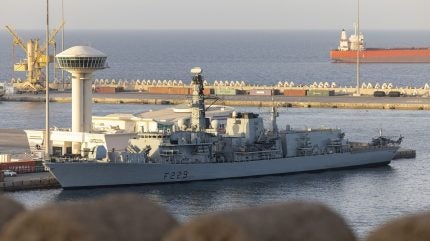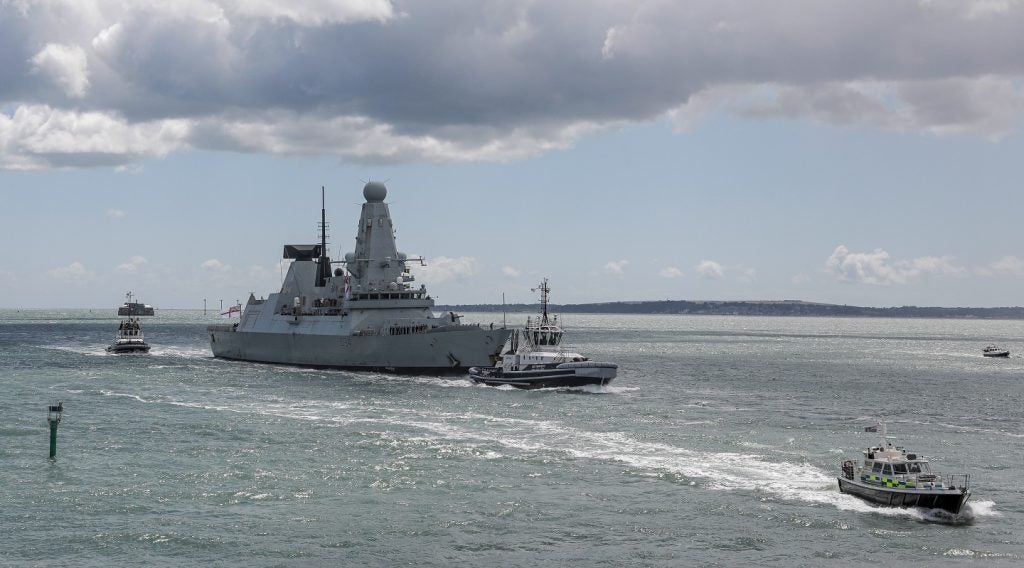
A senior official of the UK Ministry of Defence has said that the Royal Navy’s current escort fleet of just eight Type 23 frigates and six Type 45 destroyers is a “credible force” able to meet defence requirements at both the international and multinational level.
At its present level, the Royal Navy’s 14-strong escort force is the lowest it has been for decades, with the number of available vessels even lower, calculated at just eight hulls as of 31 October 2024.
This is just 73% of the previously considered minimum required for the Royal Navy to be able to perform its required duties.
HMS Northumberland was the latest to be axed, along with the service’s two amphibious assault ships in a swathe of defence cuts announced by the government this month.
This includes a frigate forward deployed in the Middle East, one set as Fleet Ready Escort to operate in home waters, and one vessel dedicated to a submarine-based Strategic Deterrent mission.
“The Royal Navy’s escort fleet, comprising Type 23 frigates and Type 45 destroyers, is a credible force calibrated to meet individual and multinational defence outputs effectively,” stated Undersecretary of State, Luke Pollard, on 22 November, in response to a parliamentary question.
“These vessels remain poised to defend the fleet against complex threats and are central to the UK’s Carrier Strike Capability, as witnessed in Carrier Strike Group 21,” said Pollard.

Pollard, who is MP for Plymouth Sutton and Devonport, home of the Royal Navy’s frigate force, said the “importance of the escort fleet” would be “further illustrated” in Carrier Strike Group (CSG) 25, which will deploy to the Indo-Pacific next year.
The previous CSG in 2021 saw two Type 23 frigates and two Type 45 destroyers escort a UK carrier into the Indo-Pacific. It is unclear whether a similar force would able to be generated for the 2025 deployment, or if Nato allies would be required to fill any gaps.
When in opposition, Pollard posed parliamentary questions to the then-Conservative government regarding the condition of the Type 23 frigate fleet, which is currently operating far beyond its intended service life.
Royal Navy regeneration still years away
Just eight Type 23 frigates are still in service: HMS Lancaster, HMS Iron Duke, HMS Richmond, HMS Somerset, HMS Sutherland, HMS Kent, and HMS Portland.
It is unclear how much longer HMS Lancaster can continue operating, with the vessel intended to retire from service this year. HMS Lancaster has been based out of Mina Salmon Naval Support Facility in Bahrain since 2022, with a decision required on whether to undertake a further live extension programme upon its return in 2025, or else decommission the vessel.
Should the vessel be decommissioned in 2025, the Royal Navy will be down to just 13 surface escorts, far below the 19 hulls that had previously been considered the minimum standard.
HMS Lancaster and HMS Iron Duke are the two oldest remaining Type 23 frigates, with the latter vessel completing a refit in 2023 that could provide another five years of operational service.
The availability of the Type 45s has been hit in recent years as the class undergoes the PIP programme at Cammell Laird shipyard, intended to fix long-standing propulsion issues.
The first of the replacement Type 31 and Type 26 frigates, currently under build, are still years away from joining the Royal Navy.







